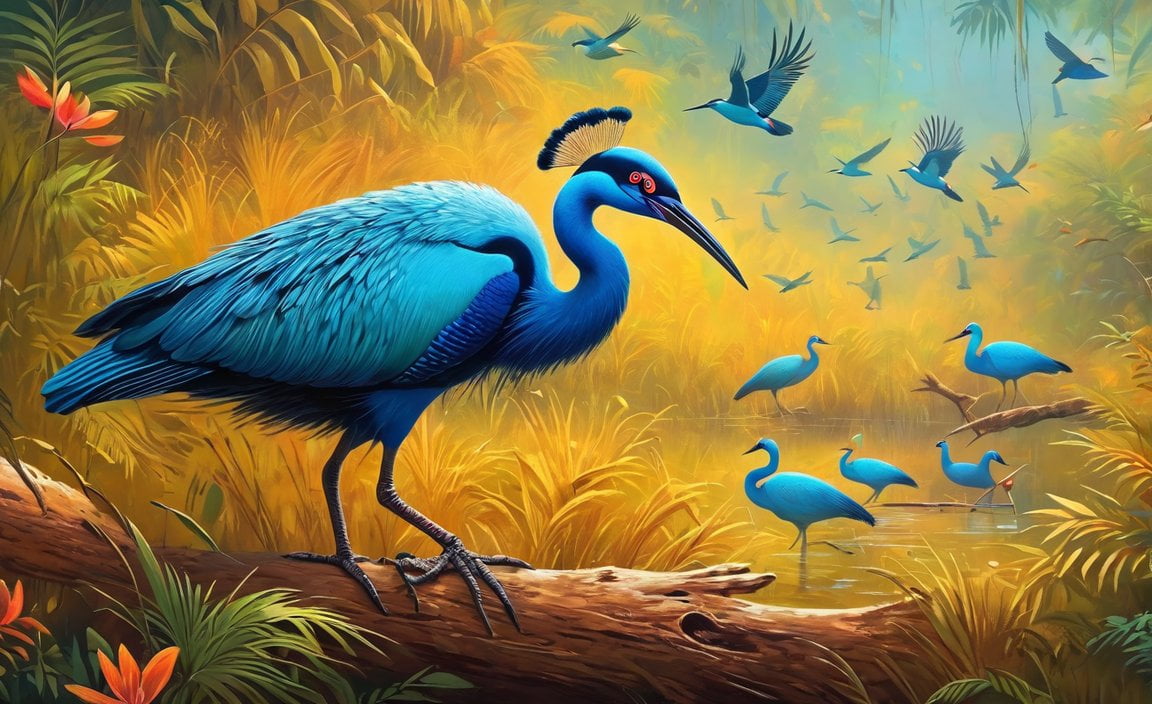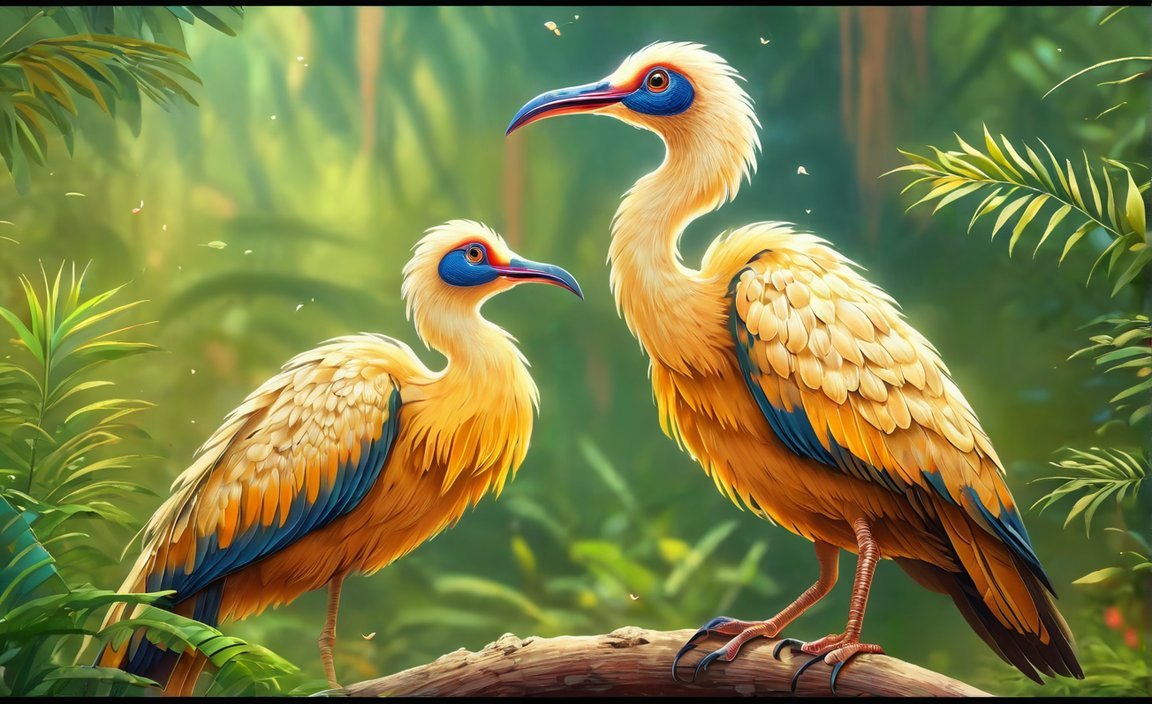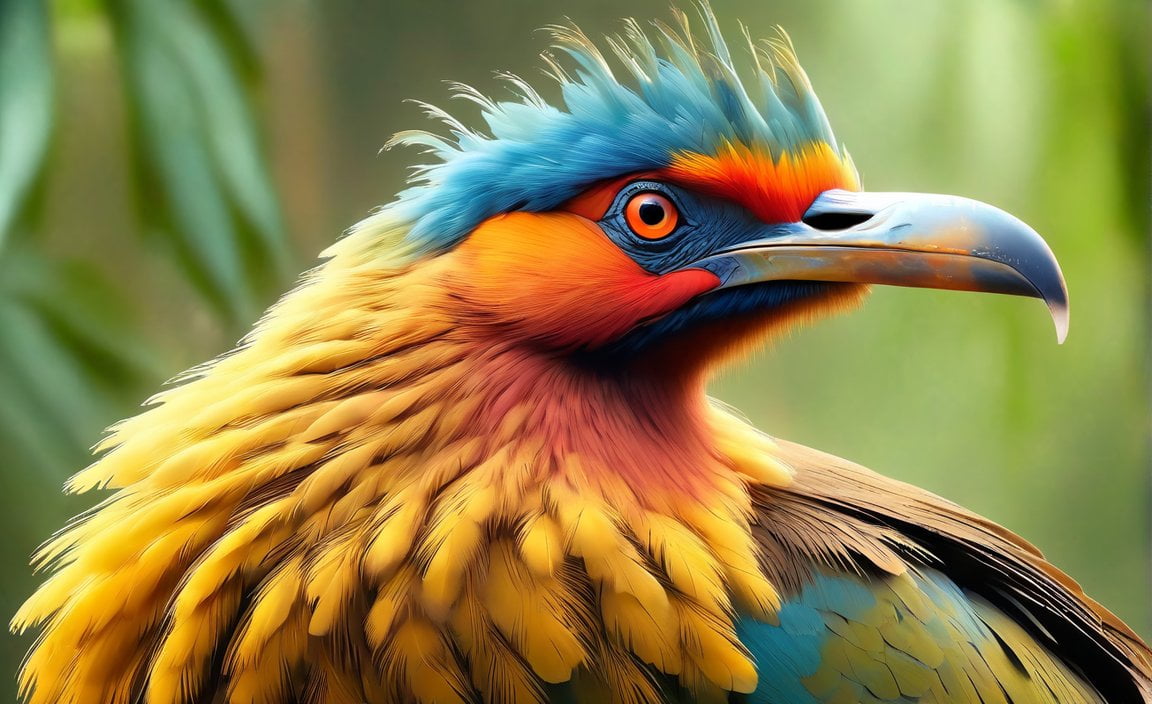The vibrant tapestry of India’s biodiversity has been tragically marred by the extinction of several magnificent bird species. These avian losses serve as stark reminders of the delicate balance of ecosystems and the urgent need for conservation efforts. Let’s embark on a somber journey to explore the ten extinct birds of India, understanding the factors that led to their demise and the profound impact of their absence.
The Disappearance of Avian Life

The extinction of bird species in India is a complex issue intertwined with various factors, including:
Habitat Loss: The Relentless Encroachment on Avian Homes
The relentless expansion of human settlements, agriculture, and infrastructure has encroached upon the natural habitats of many bird species, depriving them of essential nesting, feeding, and breeding grounds. Forests, once teeming with diverse avian life, have been cleared for agriculture, timber, and urbanization, leaving many bird species homeless and struggling to survive. Wetlands, vital ecosystems for waterbirds, have been drained and converted for human use, disrupting the delicate balance of these ecosystems and leading to the decline of many specialized bird species.
Hunting and Illegal Trade: A Perilous Threat to Bird Populations
The indiscriminate hunting of birds for food, sport, or the illegal wildlife trade has decimated populations, particularly of rare and endemic species. Hunters target birds for their meat, feathers, and other body parts, often driving them to the brink of extinction. The illegal wildlife trade, fueled by demand for exotic pets and traditional medicine ingredients, has further exacerbated the plight of many bird species, with poachers snatching individuals from their natural habitats and selling them on the black market.
Pesticide Use: A Silent Killer of Bird Life
The widespread use of pesticides in agriculture has resulted in the poisoning of birds, disrupting their food chains and causing reproductive failures. Pesticides, designed to kill pests, often have unintended consequences, harming non-target species, including birds. Birds that feed on insects or other pesticide-contaminated organisms are at high risk of poisoning, leading to population declines and reproductive problems. The use of persistent pesticides, which remain in the environment for long periods, further exacerbates the problem, exposing birds to chronic contamination over time.
Invasive Species: Disrupting Ecosystems and Uprooting Native Birds
The introduction of invasive alien species, such as predators or competitors, has disrupted the natural balance of ecosystems, putting immense pressure on native bird populations. Invasive species, introduced either intentionally or unintentionally, can outcompete native birds for food and resources, leading to population declines and even extinctions. Invasive predators, such as feral cats and rats, prey on native bird eggs and nestlings, further threatening their survival. The introduction of invasive species highlights the interconnectedness of ecosystems and the delicate balance that can be easily disrupted by human actions.
The Lost Species

The tragic loss of these ten bird species serves as a stark reminder of the delicate balance of ecosystems and the far-reaching consequences of human actions. Let’s delve into the stories of these avian treasures, understanding the factors that led to their demise and the profound impact of their absence.
1. Jerdon’s Courser: A Silent Victim of Habitat Loss
Once a familiar sight in the arid regions of central India, the Jerdon’s Courser, a small, ground-dwelling bird, vanished from existence due to relentless habitat loss caused by overgrazing and agricultural expansion. Their preferred habitat of open grasslands and scrublands was gradually transformed into vast agricultural fields and overgrazed pastures, depriving them of the essential nesting, feeding, and breeding grounds that sustained their populations. As their habitat dwindled, so did their numbers, until sadly, the Jerdon’s Courser disappeared from the Indian avifauna.
2. Andaman Wood Pigeon: A Vanished Endemic of the Andaman Islands
The Andaman Wood Pigeon, an endemic pigeon native to the Andaman Islands, met its demise due to the combined pressures of deforestation and hunting. The lush forests that once provided them with shelter, food, and nesting sites were relentlessly cleared for timber and agricultural purposes. Simultaneously, hunting for their meat and feathers further decimated their populations. With their habitat destroyed and hunted to the brink of extinction, the Andaman Wood Pigeon was sadly lost to the world.
3. Nicobar Megapode: A Ground-Nesting Bird Succumbs to Habitat Loss and Hunting
The Nicobar Megapode, a large, ground-nesting bird endemic to the Nicobar Islands, suffered the same fate as its Andaman relative, the Nicobar Pigeon. Habitat destruction, driven by deforestation and human encroachment, stripped them of their essential nesting sites, while hunting for their meat and eggs further reduced their numbers. The loss of these ground-nesting birds not only disrupted the ecosystem but also deprived the Nicobar Islands of a unique and fascinating species.
4. Pink-headed Duck: A Migratory Duck Driven to Extinction
The Pink-headed Duck, once a common sight in wetlands across India, was a migratory duck that undertook long-distance journeys between India and Southeast Asia. However, its fate was sealed by a combination of hunting and habitat loss. Indiscriminate hunting for its meat and eggs, coupled with the degradation and loss of its wetland habitats, led to a dramatic decline in its populations. With its migratory routes disrupted and its breeding grounds lost, the Pink-headed Duck sadly vanished from the Indian skies.
5. White-bellied Heron: An Elegant Waterbird Lost to Overhunting
The White-bellied Heron, an elegant waterbird that once graced wetlands and coastal areas of India, succumbed to the pressures of overhunting and habitat loss. Their graceful presence in wetlands was a cherished sight, but their populations were relentlessly hunted for their feathers and meat. Simultaneously, the loss and degradation of wetlands due to human activities deprived them of their essential feeding and breeding grounds. With their numbers dwindling and their habitats disappearing, the White-bellied Heron vanished from the Indian avifauna.
6. Forest Owlet: A Silent Loss from Peninsular India’s Forests
The Forest Owlet, a small owl once found in the forests of peninsular India, disappeared due to the relentless destruction of its forest habitat. The clearing of forests for timber, agriculture, and human settlements deprived the Forest Owlet of its essential nesting, roosting, and hunting grounds. As the forests shrank, so did the owl’s populations, until sadly, they vanished from the Indian forests, leaving behind a silent void in the nocturnal chorus.
7. Himalayan Quail: An Elusive Quail Driven to Extinction
The Himalayan Quail, an elusive quail inhabiting the high Himalayas, met its demise due to a combination of hunting and habitat degradation. Their remote mountain habitats, once pristine and secluded, became increasingly accessible to hunters, who pursued them for their meat and feathers. Simultaneously, overgrazing and habitat degradation in the Himalayas further reduced their available food sources and nesting sites. With their populations dwindling and their habitats threatened, the Himalayan Quail vanished from the high peaks of the Himalayas.
8. Red-headed Vulture: A Tragic Victim of Veterinary Drug Poisoning
The Red-headed Vulture, once a common scavenger across India, suffered a catastrophic decline due to the widespread use of the veterinary drug diclofenac. Diclofenac, used to treat livestock, was found to be highly toxic to vultures when they consumed the carcasses of treated animals. The drug caused fatal kidney failure in vultures, leading to a staggering population decline of over 90% in a decade. This tragic incident highlighted the far-reaching consequences of seemingly unrelated human actions on wildlife.
9. Bengal Florican: A Large Bustard Lost to Habitat Loss and Hunting
The Bengal Florican, a large bustard once found in grasslands and cultivated lands across India, disappeared due to a combination of habitat loss, hunting, and pesticide use. Their preferred habitats of tall grasslands and open fields were gradually converted into agricultural lands, fragmented by roads and human settlements. Additionally, hunting for their meat and the use of pesticides in agriculture further reduced their populations. With their habitats vanishing and facing multiple threats, the Bengal Florican sadly vanished from the Indian landscape.
10. Great Indian Bustard: A Critically Endangered Icon of Indian Skies
The Great Indian Bustard, the heaviest flying bird in India, stands precariously on the brink of extinction. Once soaring gracefully across the grasslands and scrublands of India, their populations have dwindled due to habitat loss, hunting, and collisions with power lines. The conversion of grasslands into agriculture and human settlements has fragmented their habitats, while hunting for their meat and feathers continues to pose a threat. Collisions with power lines, often shrouded in mist or low light, have claimed the lives of many bustards. With their populations critically low and facing multiple threats, the Great Indian Bustard’s future hangs in the balance, a stark reminder of the fragility of India’s avian heritage.
Conclusion
The loss of these magnificent birds is a profound tragedy, not only for India’s biodiversity but for the entire natural world. Their extinction serves as a stark reminder of the fragility of ecosystems and the far-reaching consequences of human actions. As we mourn the loss of these avian treasures, let us also pledge to protect the remaining species, ensuring that the skies of India continue to echo with the songs of birds.
The conservation of India’s birdlife requires a multifaceted approach that encompasses habitat protection, stricter regulations on hunting and wildlife trade, sustainable agricultural practices, and public awareness campaigns. By working together, we can rekindle the vibrant chorus of birds that once filled the skies of India, ensuring that future generations can experience the wonder and beauty of these avian gems.
- Discover fascinating insights about 10 extinct species in Pakistan, including unique flora and fauna.
- Dive into intriguing facts about cats and uncover the mysteries of these beloved feline companions.
- Explore the world of horse riding with 10 captivating facts that will pique your equestrian curiosity.
- Learn about the incredible abilities and roles of K9 police dogs in law enforcement and their impressive contributions to society.
FAQ
Q1: What are the main causes of bird extinction in India?
A1: The primary threats to birdlife in India include habitat loss, hunting, pesticide use, and the introduction of invasive species. Habitat loss, driven by deforestation, agriculture, and urbanization, has deprived many bird species of their essential nesting, feeding, and breeding grounds. Hunting, both for food and sport, has decimated populations of rare and endemic species. The widespread use of pesticides in agriculture has resulted in the poisoning of birds, disrupting their food chains and causing reproductive failures. Additionally, the introduction of invasive alien species, such as predators or competitors, has disrupted the natural balance of ecosystems, putting immense pressure on native bird populations.
Q2: Which are some of the most notable extinct birds of India?
A2: India has suffered the loss of several magnificent bird species, including the Jerdon’s Courser, Andaman Wood Pigeon, Nicobar Megapode, Pink-headed Duck, White-bellied Heron, Forest Owlet, Himalayan Quail, Red-headed Vulture, Bengal Florican, and Great Indian Bustard. These extinctions serve as stark reminders of the fragility of ecosystems and the far-reaching consequences of human actions.
Q3: What are the current conservation efforts underway to protect India’s birdlife?
A3: Several conservation initiatives are striving to safeguard India’s birdlife from further decline. These efforts include habitat protection through the establishment of wildlife sanctuaries and national parks, stricter regulations on hunting and wildlife trade, promoting sustainable agricultural practices that reduce pesticide use, and raising public awareness about the importance of bird conservation.
Q4: How can individuals contribute to bird conservation efforts in India?
A4: Individuals can play a significant role in conserving India’s birdlife by adopting bird-friendly practices in their own lives. This includes avoiding the use of pesticides in gardens, supporting local conservation organizations, participating in citizen science projects that monitor bird populations, and educating others about the importance of bird conservation.
Q5: What is the significance of understanding bird extinction in India?
A5: Understanding bird extinction in India is crucial for recognizing the delicate balance of ecosystems and the far-reaching consequences of human actions on biodiversity. The loss of bird species serves as a warning sign, highlighting the need for urgent conservation efforts to protect the rich tapestry of life on Earth.
- Unveiling the Enigma: Mansoureh Khojasteh Bagherzadeh’s Public Appearances & Private Life in Iran - July 18, 2025
- Unveiling the Mystery: Mansoureh Khojasteh Bagherzadeh’s Husband: A Rare Glimpse into a Private Life - July 18, 2025
- Unveiling Masoud Khamenei’s Mother: Power, Influence, and Iran’s Future - July 18, 2025
















